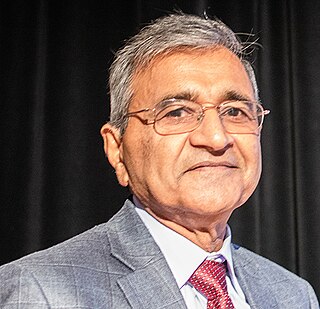 W
WBharat Bhushan is an American engineer. He is an Ohio Eminent Scholar and the Howard D. Winbigler Professor at Ohio State University.
 W
WMarkus J. Buehler is an American materials scientist and engineer at the Massachusetts Institute of Technology (MIT), where he is the McAfee Professor of Engineering. He is a member of the faculty at MIT's Department of Civil and Environmental Engineering, where he directs the Laboratory for Atomistic and Molecular Mechanics (LAMM), and also a member of MIT's Center for Computational Science and Engineering (CCSE) in the Schwarzman College of Computing. Between 2013-2020, he served as the Head of the Department of Civil and Environmental Engineering at MIT. His research and teaching activities center on the application of a computational materials science approach to understand functional material properties in biological and synthetic materials, specifically focused on mechanical properties. His work incorporates materials science, engineering, mathematics and the establishment of links between natural materials with the arts through the use of category theory. Working at the interface of art and science, he is also a composer of experimental music with an interest in sonification, whereby he developed a method to translate material structure into musical form and vice versa, realizing a materialization of sonic information in biomaterials protein design. He is well-known for the development of the materiomusical compositional technique. In 2020, he set the pathogen of COVID-19 to music, exemplifying a relationship between art and science.
 W
WDavid Carroll is a U.S. physicist, materials scientist and nanotechnologist, Fellow of the American Physical Society, and director of the Center for Nanotechnology and Molecular Materials at Wake Forest University. He has contributed to the field of nanoscience and nanotechnology through his work in nanoengineered cancer therapeutics, nanocomposite-based display and lighting technologies, high efficiency nanocomposite photovoltaics and thermo/piezo-electric generators.
 W
WBaratunde A. Cola is a scientist and engineer specializing in carbon nanotube technology.
 W
WYi Cui is a Chinese-American materials scientist, specializing in nanotechnology, and energy and environment-related research. Cui is a Professor of Materials Science and Engineering, and by courtesy, of Chemistry at Stanford University. Recently, Stanford named Cui as the new director of the Precourt Institute for Energy starting January 2021, succeeding Arun Majumdar and Sally Benson. He serves as a co-director of the Bay Area Photovoltaics Consortium, the Battery500 Consortium, and the StorageX initiative. He is also a faculty member of Stanford Photon Science of SLAC and principle investigator at the Stanford Institute for Materials & Energy Sciences. He is a Fellow of the American Association for the Advancement of Science (AAAS), Materials Research Society (MRS), Electrochemical Society (ECS), and the Royal Society of Chemistry (RSC). He has been one of the world's most-cited researchers and most influential scientific minds. He has published over 500 research papers with an H-index of 207. He currently serves as the Executive Editor of Nano Letters from ACS Publications.
 W
WWalter De Brouwer is a Belgian-born Internet and technology serial entrepreneur and semiotician. He is CEO of XY.ai and cofounder and former CEO of doc.ai and of Scanadu in Mountain View, California.
 W
WCornelis "Cees" Dekker is a Dutch physicist, and Distinguished University Professor at the Technical University of Delft. He is known for his research on carbon nanotubes, single-molecule biophysics, and nanobiology.
 W
WMildred Dresselhaus, known as the "queen of carbon science", was an American nanotechnologist. She was an Institute Professor and Professor Emerita of physics and electrical engineering at the Massachusetts Institute of Technology. Dresselhaus won numerous awards including the Presidential Medal of Freedom, the National Medal of Science, the Enrico Fermi Award and the Vannevar Bush Award.
 W
WKim Eric Drexler is an American engineer best known for seminal studies of the potential of molecular nanotechnology (MNT), from the 1970s and 1980s. His 1991 doctoral thesis at Massachusetts Institute of Technology was revised and published as the book Nanosystems: Molecular Machinery Manufacturing and Computation (1992), which received the Association of American Publishers award for Best Computer Science Book of 1992.
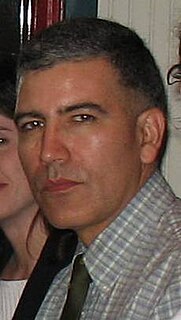 W
WFrancisco Javier "Frank" Duarte is a laser physicist and author/editor of several well-known books on tunable lasers and quantum optics. He introduced the generalized multiple-prism dispersion theory, has discovered various multiple-prism grating oscillator laser configurations, and pioneered polymer-nanoparticle gain media. His contributions have found applications in a variety of fields including astronomical instrumentation, atomic vapor laser isotope separation, geodesics, gravitational lensing, laser medicine, laser microscopy, laser pulse compression, laser spectroscopy, nonlinear optics, and tunable diode lasers.
 W
WThomas Ebbesen is a franco-norwegian physical chemist and professor at the University of Strasbourg in France, known for his pioneering work in nanoscience. He received the Kavli Prize in Nanoscience “for transformative contributions to the field of nano-optics that have broken long-held beliefs about the limitations of the resolution limits of optical microscopy and imaging”, together with Stefan Hell, and Sir John Pendry in 2014.
 W
WDonald M. Eigler is an American physicist associated with the IBM Almaden Research Center, who is noted for his achievements in nanotechnology.
 W
WRichard Phillips Feynman was an American theoretical physicist, known for his work in the path integral formulation of quantum mechanics, the theory of quantum electrodynamics, the physics of the superfluidity of supercooled liquid helium, as well as his work in particle physics for which he proposed the parton model. For contributions to the development of quantum electrodynamics, Feynman received the Nobel Prize in Physics in 1965 jointly with Julian Schwinger and Shin'ichirō Tomonaga.
 W
WHarald Fuchs is a Professor of Experimental Physics at the University of Münster, Germany, Scientific Director of the Center of Nanotechnology (CeNTech) in Münster, and co-director of the Institute of Nanotechnology (INT) in Karlsruhe. His research focuses on nanoscale science and nanotechnology, ranging from scanning probe microscopy to self organized nanostructure fabrication, and nano–bio systems. He has published more than 450 scientific articles in various journals as an author or co-author. He was awarded the Philip Morris Research Prize "Challenge Future" in 1994 and the Münsterland Innovation Prize in 2001. He is currently member of the German Academy of Natural Scientists Leopoldina, the German "National academy of science and engineering (acatech) as well as "The world academy of sciences" (TWAS). He holds two guest professorships in China. He is a cofounder of several nanotechnology companies and a member of the Editorial Boards in several international journals. In 2015 he received an Honorary Professorship at the Nanjing-Tech-University, China.
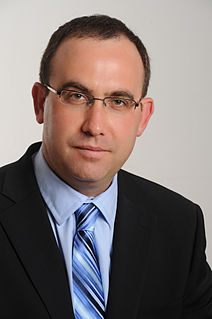 W
WEhud Gazit, is an Israeli biochemist, biophysicist and nanotechnologist. He is Professor and Endowed Chair at Tel Aviv University and a Member of the Executive Board of the University. In 2015, he was knighted by the Italian Republic for services to science and society.
 W
WIlle Christine Gebeshuber is an Austrian physicist who is specialized in nanophysics and biomimetics.
 W
WSir Andre K. Geim is a Russian-born Dutch-British physicist working in England in the School of Physics and Astronomy at the University of Manchester.
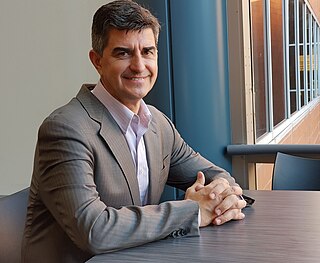 W
WYury Georgievich Gogotsi is a Ukrainian scientist in the field of material chemistry, professor at Drexel University, Philadelphia, PA since the year 2000 in the fields of Materials Science and Engineering and Nanotechnology. Distinguished University and Trustee Chair professor of materials science at Drexel University — director of the A.J. Drexel Nanotechnology Institute.
 W
WClaes-Göran Granqvist was born in Helsingborg, Sweden, in 1946. He is one of the leading figures of Swedish and international science in various fields including nanomaterials; green nanotechnology; materials for solar energy utilization and energy efficiency, electrochromic materials ; condensed matter physics; biomimetics; photocatalytic materials ; materials for radiative cooling and superconductivity; fluctuation-enhanced sensing; etc. In August 2011, Science Citation Index shows that his h-index is 66; the number of citations to his papers is 18763. He published around 730 research papers in mostly refereed journals, over 30 books, had invited conference presentations at about 250 international conferences and chaired about 30 international meetings. During the years, he had many lectures and lecture tours in Europe, Asia, Africa, North and South America, Australia.
 W
WNicole Grobert FRSC FYAE is a German-British materials chemist. She is a professor of nanomaterials at the Department of Materials at the University of Oxford, fellow of Corpus Christi College, Oxford, and a Royal Society industry fellow at Williams Advanced Engineering. Grobert is the chair of the European Commission's Group of Chief Scientific Advisors.
 W
WAndreas J. Heinrich is a physicist working with scanning tunneling microscope, quantum technology, nanoscience, spin excitation spectroscopy, and precise atom manipulation. He worked for IBM Research in Almaden for 18 years, during which time he developed nanosecond scanning tunneling microscopy which provided an improvement in time resolution of 100,000 times, and combined x-ray absorption spectroscopy with spin excitation spectroscopy. He was also principal investigator of the stop-motion animated short film A Boy and His Atom filmed by moving thousands of individual atoms. He serves on the Scientific Advisory Board of Max Planck Institute for Solid State Research and is a fellow of the American Physical Society.
 W
WMark C. Hersam is a professor of Chemistry and Materials Science Engineering at Northwestern University (2000–present) who, according to the National Science Foundation, has made "major breakthrough[s]" in the field of nanotechnology. He is a 2014 recipient of the MacArthur "Genius" Award and a 1996 Marshall Scholar. He is also an Associate Editor of ACS Nano.
 W
WTaeghwan Hyeon is a South Korean chemist. He is SNU distinguished professor in the School of Chemical and Biological Engineering at Seoul National University, director of Center for Nanoparticle Research of Institute for Basic Science (IBS), and an associate editor of the Journal of the American Chemical Society.
 W
WSumio Iijima is a Japanese physicist and inventor, often cited as the inventor of carbon nanotubes. Although carbon nanotubes had been observed prior to his "invention", Iijima's 1991 paper generated unprecedented interest in the carbon nanostructures and has since fueled intense research in the area of nanotechnology.
 W
WRené Janssen is a Dutch professor of the Moleculair Materials and Nanosystems group within the department of Chemical engineering and Chemistry at Eindhoven University of Technology.
 W
WHiromichi Kataura is a Japanese scientist known for his work on synthesis and characterization of single-wall and double-wall carbon nanotubes and on encapsulation of water, fullerenes and other organic molecules into carbon nanotubes.
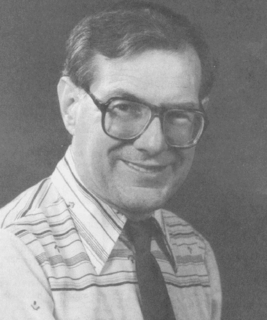 W
WRaoul Kopelman is a scientist, inventor, and is currently the Richard Smalley Distinguished University Professor of Chemistry, Physics, Applied Physics, Biophysics, Biomedical Engineering and Chemical Biology at the University of Michigan. Amongst other accomplishments, he is well known for developing the Hoshen-Kopelman algorithm. He was also amongst the first scientists pushing to establish the field of nanotechnology.
 W
WSir Harold Walter Kroto, known as Harry Kroto, was an English chemist. He shared the 1996 Nobel Prize in Chemistry with Robert Curl and Richard Smalley for their discovery of fullerenes. He was the recipient of many other honors and awards.
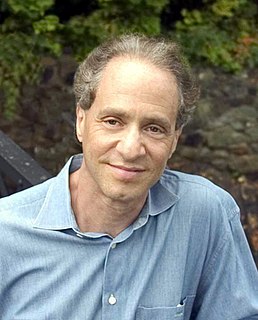 W
WRaymond Kurzweil is an American inventor and futurist. He is involved in fields such as optical character recognition (OCR), text-to-speech synthesis, speech recognition technology, and electronic keyboard instruments. He has written books on health, artificial intelligence (AI), transhumanism, the technological singularity, and futurism. Kurzweil is a public advocate for the futurist and transhumanist movements and gives public talks to share his optimistic outlook on life extension technologies and the future of nanotechnology, robotics, and biotechnology.
 W
WLaurent Levy is a French physical chemist, inventor, and pioneer of nanotechnology and nanomedicine. He is the co-founder of the global biotechnology company Nanobiotix, and has served as Chief Executive Officer (CEO) since its inception in March 2003. He also authored more than 35 international scientific publications and has applied for several patents.
 W
WCharles M. Lieber is an American chemist and pioneer in nanoscience and nanotechnology. In 2011, Lieber was named by Thomson Reuters as the leading chemist in the world for the decade 2000-2010 based on the impact of his scientific publications. He is known for his contributions to the synthesis, assembly and characterization of nanoscale materials and nanodevices, the application of nanoelectronic devices in biology, and as a mentor to numerous leaders in nanoscience.
 W
WTessy María López Goerne is a Mexican solid-state chemist, professor, researcher, academic, and popular science communicator. She has specialized in the fields of nanotechnology and nanomedicine, as well as being a pioneer in catalytic nanomedicine. She directs the Nanotechnology and Nanomedicine Laboratories at the Universidad Autónoma Metropolitana Xochimilco (UAM-X) plant and the National Institute of Neurology and Neurosurgery.
 W
WAndrew Maynard is an author, professor, and director of the Risk Innovation Lab at the School for the Future of Innovation in Society (SFIS) at Arizona State University (ASU). Maynard was previously the director of the University of Michigan Risk Science Center and served as Science Advisor to the Project on Emerging Nanotechnologies at the Woodrow Wilson International Center for Scholars. His work focuses on the socially responsive and responsible development of emerging and converging technologies.
 W
WRalph C. Merkle is a computer scientist. He is one of the inventors of public key cryptography, the inventor of cryptographic hashing, and more recently a researcher and speaker on cryonics.
 W
WUlrich Mescheder is a German professor and university administrator. He heads the Central Research Institute and the Technology Laboratory for Micro- and Nanosystems and is Vice President for Research at Furtwangen University of Applied Sciences. His research specializations are microsystems technology and nanotechnology.
 W
WRamez Naam is an American technologist and science fiction writer. He is best known as the author of the Nexus Trilogy. His other books include The Infinite Resource: The Power of Ideas on a Finite Planet and More than Human: Embracing the Promises of Biological Enhancement. He is currently co-chair for energy and the environment at Singularity University.
 W
WSir Konstantin Sergeevich Novoselov is a Russian-British physicist, and a Professor at the Centre for Advanced 2D Materials, National University of Singapore. He is also the Langworthy Professor in the School of Physics and Astronomy at the University of Manchester. His work on graphene with Andre Geim earned them the Nobel Prize in Physics in 2010.
 W
WChristine Peterson is an American forecaster, and the co-founder of Foresight Institute. She is credited with suggesting the term "open source" when used in connection with software.
 W
WMark Iosifovich Petrokovets was a Russian and Belarusian scientist prominent in the fields of tribology, the study of frictional interaction between surfaces, and well known for his classical influential handbooks "Introduction to Tribology" and "Friction and wear in polymer-based materials".
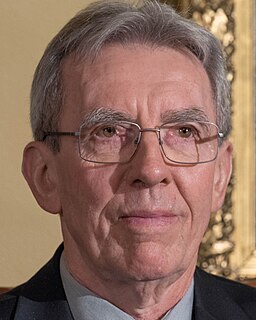 W
WJean-Pierre Sauvage is a French coordination chemist working at Strasbourg University. He graduated from the National School of Chemistry of Strasbourg, in 1967. He has specialized in supramolecular chemistry for which he has been awarded the 2016 Nobel Prize in Chemistry along with Sir J. Fraser Stoddart and Bernard L. Feringa.
 W
WGagik Shmavonyan is Professor at National Polytechnic University of Armenia, PhD in Physics, D.Sc in Engineering., President of "NanoHiTech" Association (Nanotechnology), International Expert in Nanotechnology and Chief Scientific Coordinator of multidisciplinary research group of scientific experts from different countries at LarrainVial Investment and Advisory Company, Expert/Project Peer Reviewer at Science Fund of the Republic of Serbia, as well as Advisor at Ministery of High-Tech Industry of Armenia and Science Committee of Armenia.
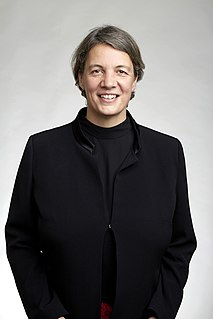 W
WMichelle Yvonne Simmons, is a Scientia Professor of Quantum Physics in the Faculty of Science at the University of New South Wales and has twice been an Australian Research Council Federation Fellow and is an Australian Research Council Laureate Fellow. She is the Director of the Australian Research Council Centre of Excellence for Quantum Computation & Communication Technology and is recognised internationally as a pioneer in atomic electronics. She is also editor-in-chief of npj Quantum Information, an academic journal publishing articles in the emerging field of quantum information science. On 25 January 2018, Simmons was named as the 2018 Australian of the Year for her work and dedication to quantum information science. On 10 June 2019, Simmons was appointed an Officer of the Order of Australia (AO) in the 2019 Queen's Birthday Honours in recognition of her "distinguished service to science education as a leader in quantum and atomic electronics and as a role model."
 W
WRichard Errett Smalley was the Gene and Norman Hackerman Professor of Chemistry and a Professor of Physics and Astronomy at Rice University. In 1996, along with Robert Curl, also a professor of chemistry at Rice, and Harold Kroto, a professor at the University of Sussex, he was awarded the Nobel Prize in Chemistry for the discovery of a new form of carbon, buckminsterfullerene, also known as buckyballs. He was an advocate of nanotechnology and its applications.
 W
WNguyễn Thị Kim Thanh is a Professor of Nanomaterials at University College London. She was awarded the 2019 Royal Society Rosalind Franklin Award for her research and efforts toward gender equality.
 W
WJames M. Tour is an American chemist and nanotechnologist. He is a Professor of Chemistry, Professor of Materials Science and NanoEngineering, and Professor of Computer Science at Rice University in Houston, Texas.
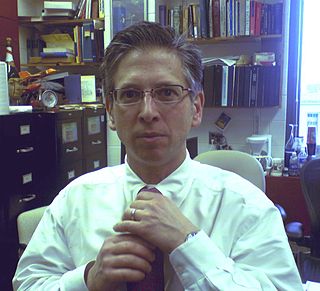 W
WPaul S. Weiss is a leading American nanoscientist at the University of California, Los Angeles. He holds numerous positions, including UC Presidential Chair, Distinguished Professor of Chemistry and Biochemistry, Bioengineering, and of Materials Science and Engineering, and founder and editor-in-chief of ACS Nano. From 2019–2014, he held the Fred Kavli Chair in NanoSystems Sciences and was the director of the California NanoSystems Institute. Weiss has co-authored over 400 research publications and holds over 40 US and international patents.
 W
WMiguel José Yacamán is a Mexican physicist who has made many contributions to the fields of materials science, nanotechnology, and physics.